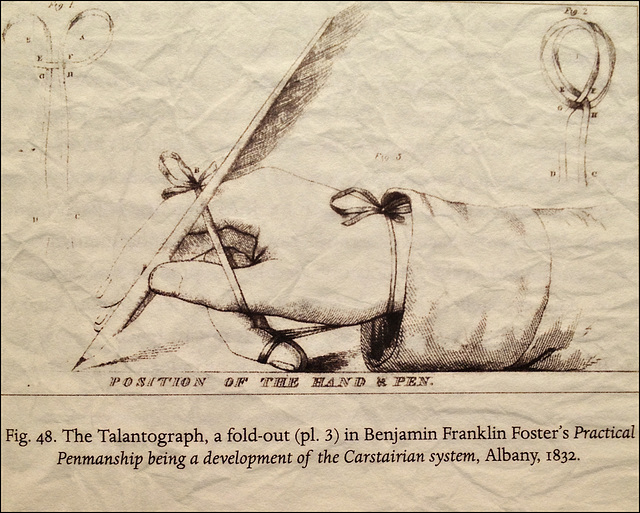Winter morn
Library window
Just leaves
Vecci Soli
Photographer
Coffee
Jaggery - Old style
Capitol Mall
Capitol Mall
Fruits / vegetables
Food Court / Beer / Sandwiches
Hotdogs
Tee Shirts
Fruits / vegetables
Fruits / vegetables
Book of Hours
A leaf from the Gutenberg Bible ~ Latin Vulgate 14…
First morning of life
Collecting excerpts
Gas-sipper
Wall Art
Immigrants
Nissan Leaf
"Brain drain"
Holiday Special
VolksWaffle International
Official Smog
Six Lbs., / $5.oo
Tony's toys
NIETZSCHE
Capitol Interior - Lansing Michigan
BOOK WORM
And then there were showers.....
Celebration of Spring
Erstwhile neighbourhood
Dream flower
A visit to the Capitol
Keywords
Authorizations, license
-
Visible by: Everyone -
All rights reserved
- Photo replaced on 17 Dec 2017
-
277 visits
Talantograph


Probably the ultimate symbol of this obsession of physical control was the so called 'talantograph' a ligature use to tie the hand into proper writing position. Thus bound it was impossible rest the hand and arm as they executed a long series of character-strengthening exercises. Victorians were drawn to binding to all manner of problems,. . . . . as a literal rendering of their obsession with the mastery of the body. . . . . . Excerpt: "Handwriting in America - A Cultural History ~ Tamera P.Thornton
- Keyboard shortcuts:
Jump to top
RSS feed- Latest comments - Subscribe to the comment feeds of this photo
- ipernity © 2007-2024
- Help & Contact
|
Club news
|
About ipernity
|
History |
ipernity Club & Prices |
Guide of good conduct
Donate | Group guidelines | Privacy policy | Terms of use | Statutes | In memoria -
Facebook
Twitter

Sign-in to write a comment.